This post may contain ads and affiliate links and we may earn a small commission when you click on the links at no additional cost to you. As an Amazon Affiliate, we earn from qualifying purchases. You can read our full disclaimer here.
Fostering a Dog with Separation Anxiety: Journey to a Calmer Dog
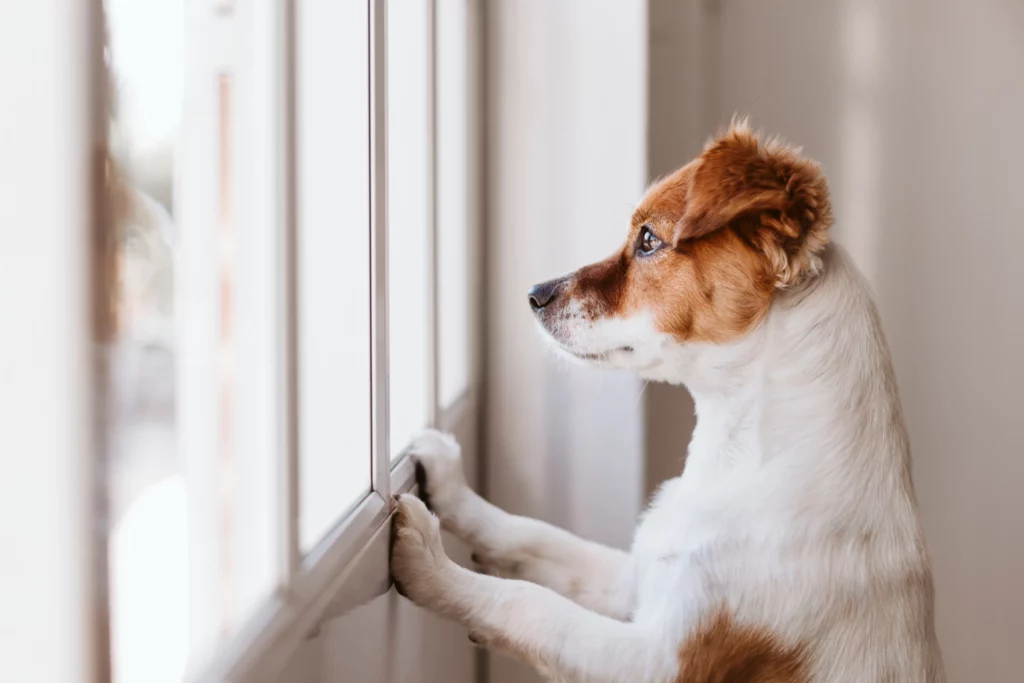
Fostering a dog with separation anxiety can be a challenge that tests the patience and heart of any dog lover.
My Goldendoodle, Gunner, had his fair share of anxious moments, making this a subject I’m intimately familiar with.
Gunner used to express his distress in a chorus of barks whenever we left him alone. Yes, even when his fur-sister was around. But he’s come a long way since then.
Just the other day, I walked in (after being gone for several hours) to find him nestled peacefully among the bed pillows, deep in slumber.
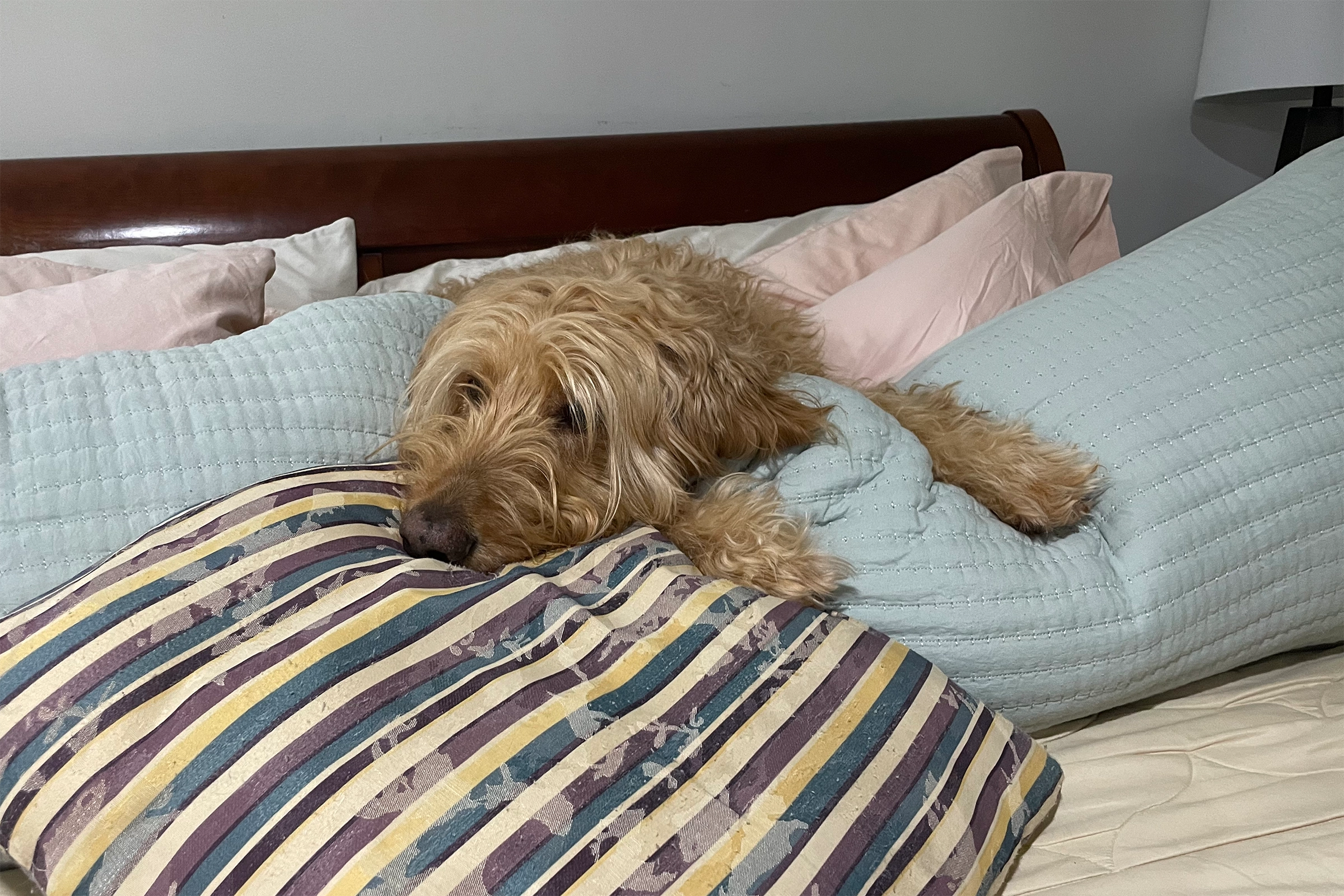
Why the Topic of Fostering a Dog with Separation Anxiety is Important
It got me thinking – if my Gunner could make such progress, then so could other dogs. Particularly, foster dogs who might be dealing with the double whammy of separation anxiety and past traumas.
So, here we are, exploring ways to make that journey a little smoother for them, and for you, their temporary parents.
Your Role as Foster Parents
Now, whether you’re just starting out as a dog foster parent or you’ve been doing it for a while, it’s important to understand that each dog is unique. They all have their own quirks, and yes, their own fears.
But with patience, love, and a few handy tips, you can help your foster dog navigate through their anxiety and live a happier, more relaxed life.
What is Separation Anxiety in Dogs?
So, what’s this thing called separation anxiety? Simply put, separation anxiety in dogs is a state of stress or fear that kicks in when they’re left alone or separated from their favorite humans.
It’s a bit like us missing our best friend, but cranked up a few notches.
How Fostering a Dog with Separation Anxiety Shows Up
It’s not always easy to spot, but there are some signs to look out for. Your dog might start acting differently. Maybe they’ll start barking incessantly, chewing on your favorite shoes, or even trying to escape.
And let’s not forget about the potty accidents that seem to conveniently happen when you’re out.
Don’t miss our post about dog bio examples. A great bio can help foster dogs find a permanent home quickly.
Potential Causes
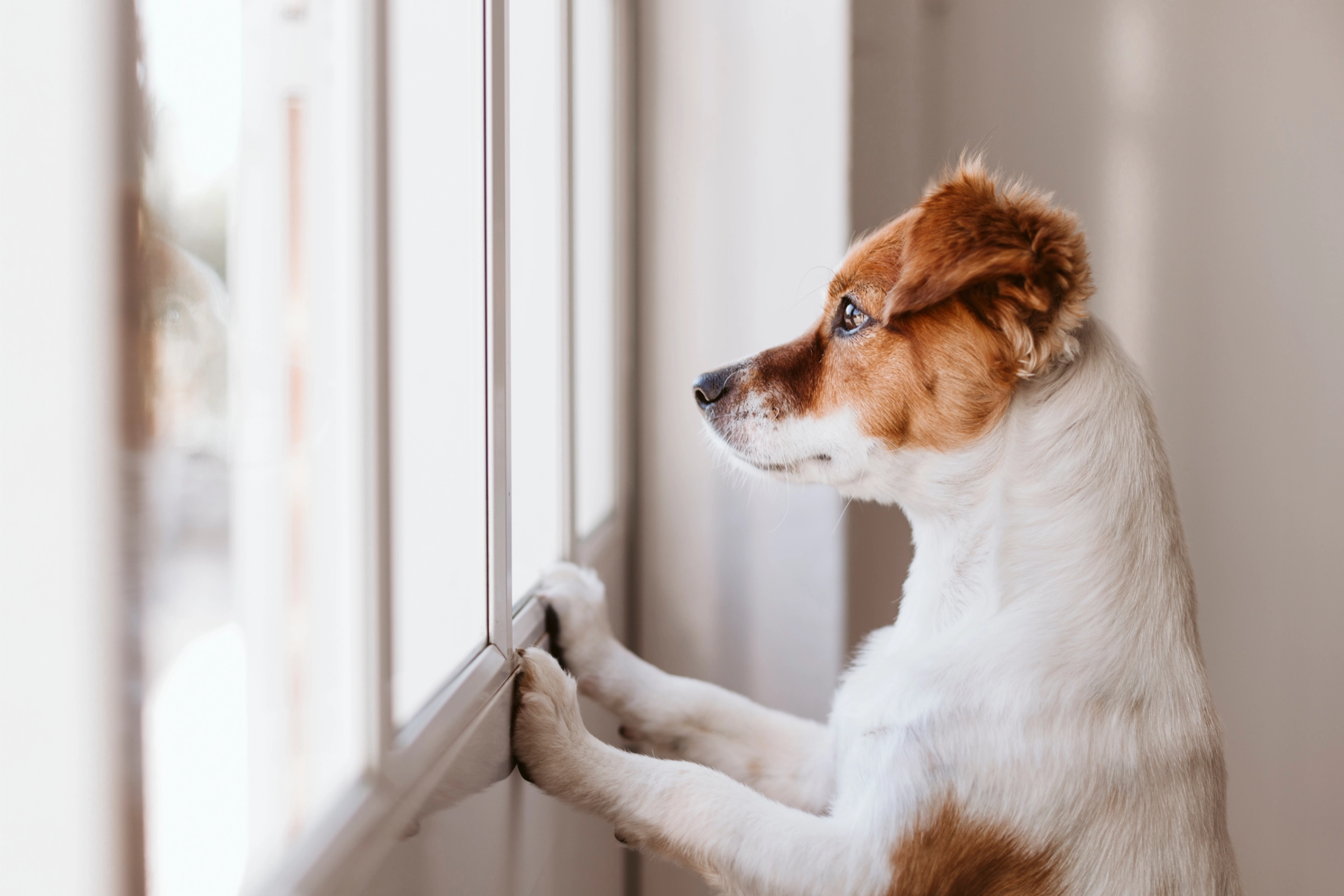
And what causes separation anxiety? Well, it can be a mix of things. Sometimes, it’s the change in a dog’s environment or routine that throws them off. Other times, it’s more about their past experiences.
Let’s break it down a bit more:
- Change in Family or Living Situation: This can be a big one, especially for foster dogs. Moving into a new home with new people can be a stressful experience for a dog. Imagine being plopped down in a new country with no idea of the language or customs. Pretty overwhelming, right?
- Traumatic Events: A dog might develop separation anxiety after a traumatic event, such as being lost or abandoned. Foster dogs often come with a backstory that could include these kinds of experiences.
- Breed and Temperament: Some breeds are more prone to anxiety than others. Also, a dog’s individual temperament plays a role. Dogs that are naturally more nervous or timid might be more likely to develop separation anxiety.
The key takeaway? It’s about understanding your foster dog’s individual circumstances and history. From there, we can find ways to help them deal with their anxiety.
Recognizing Signs when Fostering a Dog with Separation Anxiety

Learning to recognize the signs of separation anxiety can be a game-changer. Why? Well, if you know what to look for, you can better help your furry friend manage their fears. Here are some of the common symptoms:
- Barking or Howling: If your dog suddenly turns into a neighborhood alarm system the moment you step out, that’s a red flag. Gunner, for instance, would bark his heart out when left alone.
- Destructive Behavior: Notice your favorite shoes becoming chew toys or your furniture looking like it’s gone a few rounds with a chainsaw? When a dog is anxious, they might try to cope by chewing or scratching at things.
- Attempts to Escape: This can be pretty serious. Some dogs with separation anxiety will try to escape, potentially causing injury to themselves in the process.
- Pacing: Ever noticed your dog walking in a set pattern or path when you’re about to leave? That could be a sign of anxiety brewing.
- Accidents Indoors: Even the most house-trained dogs can have accidents if they’re feeling anxious. So, if you’re finding surprises in the house after you’ve been out, it could be more than just a bathroom mishap.
- Excessive Drooling or Panting: Some dogs might start drooling or panting more than usual when they’re anxious.
Severity and Frequency Varies
Remember, though, that these signs can vary. Some dogs might show only one symptom, others might display several. And just like us, dogs have good days and bad days.
One day, Gunner would bark a little and then settle down. Another day, he’d be barking as if he was auditioning for a spot in a dog choir.
Being aware of these signs is the first step in helping your foster dog. Once you know what to look for, you’re better equipped to make your dog feel safer and more comfortable.
It’s a learning process for both you and your four-legged companion, but it’s definitely worth the effort.
Techniques to Help a Foster Dog with Separation Anxiety
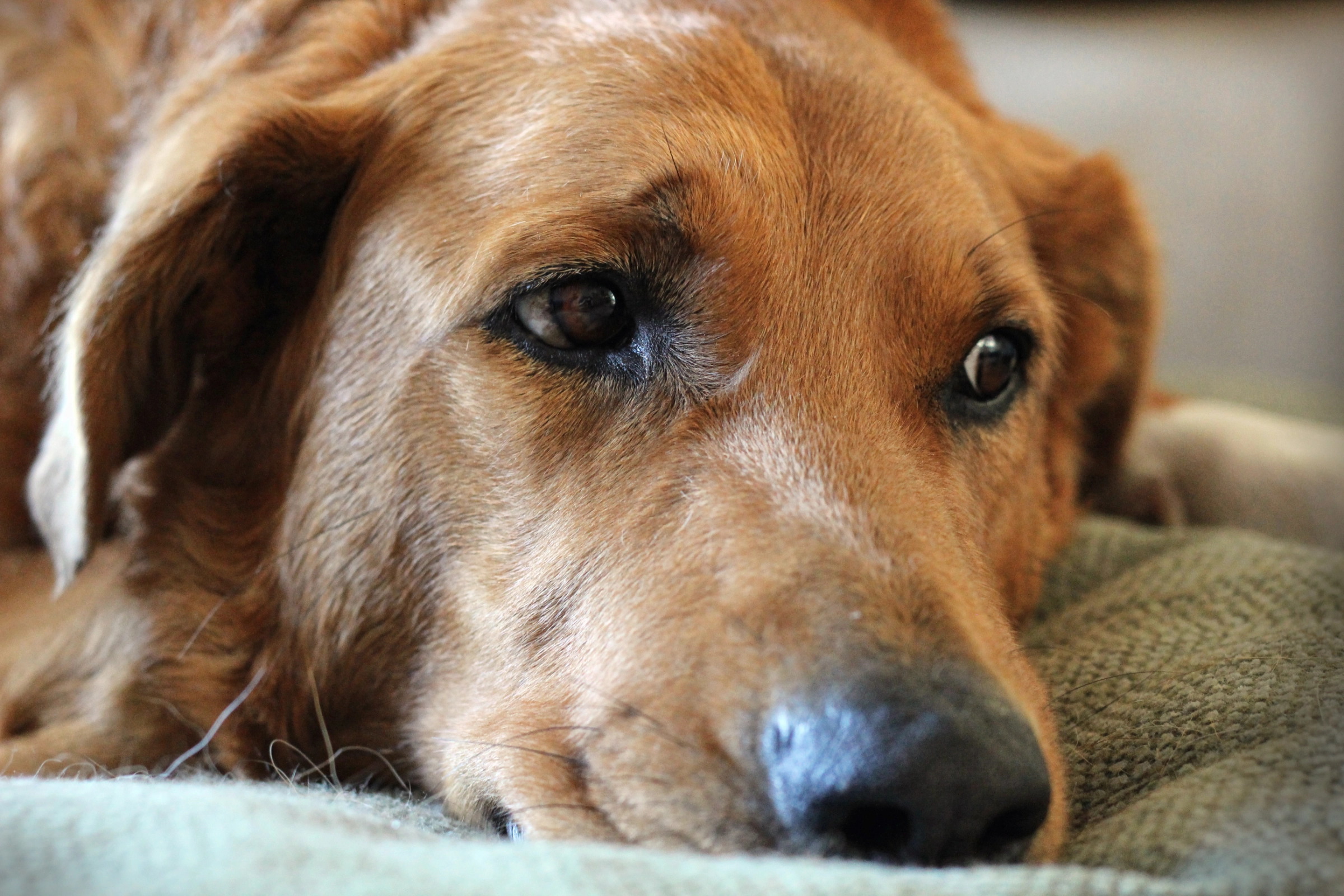
Gradual Desensitization
Dealing with a dog’s separation anxiety can feel like a bit of a juggling act. However, gradual desensitization is a technique that can be hugely helpful. In essence, this involves exposing your dog to the thing that causes anxiety, but in small, manageable doses.
For example, start by leaving your dog alone for just a few minutes at a time. Then, as they become more comfortable, slowly increase the duration. By gradually upping the ante, your dog can learn to cope with being alone without becoming overwhelmed.
Counter-Conditioning
Next up, let’s talk about counter-conditioning. This technique involves changing your dog’s emotional response to being alone. For instance, you could turn your departure into a positive event by giving your dog a treat or toy they love before you go out.
Over time, your dog can start associating your absence with positive things, rather than feeling anxious.
Distraction Methods
Distraction is another useful tool in your separation anxiety toolbox. Before you leave, consider giving your dog a puzzle toy filled with treats. The aim here is to distract your dog and give them something positive to focus on while you’re away.
DUAL-ACTION FUN: Toss the stuffed trunk or use the squeaky toys for a fetching game they’ll adore.
KEEP BOREDOM AWAY: Stimulate your dog mentally and cater to their instinctual hunt with irresistible squeaky squirrels!
Creating a Safe Space when Fostering a Dog with Separation Anxiety
Last, but definitely not least, is creating a safe space for your dog. This could be a room, a crate, or even a special bed. The idea is to create a place where your dog feels safe and comfortable when you’re not around.
Remember to fill this space with things your dog loves, like their favorite blanket or toys. By doing this, you’re essentially creating a sanctuary for your dog – a place they can retreat to when they’re feeling anxious.
All these techniques can be effective in managing separation anxiety. But it’s important to remember that every dog is different. What works for one dog might not work for another.
It’s all about patience, trial, and error, and finding what works best for your furry friend.
This cozy bed keeps your dog off chilly floors. Its claw-resistant fleece ensures longevity without the risk of loose threads.
Importance of Routine for Dogs with Separation Anxiety
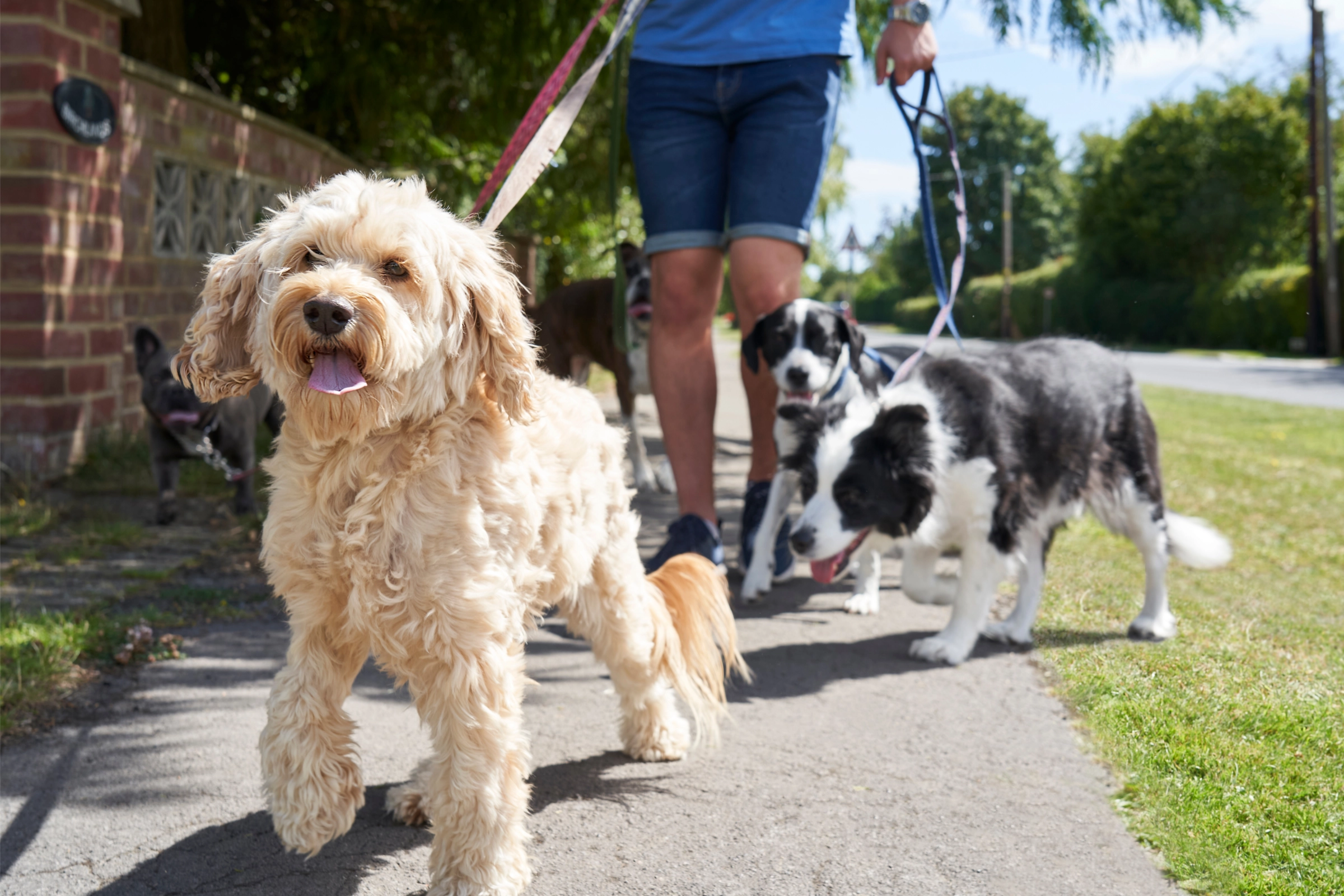
Why Routine Matters
Let’s talk routine. You might think it’s all about feeding and walkies, but there’s a lot more to it when dealing with separation anxiety. Consistent routines give dogs a sense of security, making them feel a lot calmer. Here’s why:
- Predictability: Dogs love knowing what’s coming next. A consistent routine helps them understand what to expect, reducing anxiety.
- Building Trust: Following a regular schedule shows your dog that they can trust you, strengthening your bond.
- Management of Energy: Regular exercise and feeding times can help manage your dog’s energy levels, making them less likely to act out due to anxiety.
Creating a Consistent Schedule when Fostering a Dog with Separation Anxiety
Creating a routine might seem daunting, but it’s really all about consistency. Here’s a basic schedule you might consider:
- Morning Walk: Start the day with some exercise. A tired dog is a happy dog!
- Breakfast Time: After the walk, it’s time for breakfast. Regular meal times are a crucial part of any routine.
- Quality Time: Before you leave for the day, spend a little time together. This could be playtime, training, or just some good old cuddles.
- Leaving Routine: When it’s time to leave, make it a positive experience. Maybe that means a special treat, or a favorite toy.
- Homecoming Routine: Keep your return calm and low-key to avoid overexcitement.
Tailoring to Your Dog’s Needs
Remember, every dog is different. It might take a bit of tweaking to find the routine that suits your foster dog best. The key is consistency. Once you find a schedule that works, stick to it.
A predictable routine can make a world of difference for a dog with separation anxiety, providing a sense of security and structure in their day-to-day life.
Professional Help: When and Why to Consider It
Sometimes, despite your best efforts, you might find that your foster dog’s separation anxiety isn’t improving. Or, perhaps their anxiety is so severe that it’s causing harm to themselves or damage to your home. In these cases, it’s important to know when it’s time to seek professional help.
Benefits of Professional Intervention
A professional can provide a wealth of benefits:
- Expert Assessment: Professionals can help identify the root cause of your dog’s anxiety and devise an effective treatment plan.
- Training: A professional dog trainer or behaviorist can provide targeted training to help your dog cope with their anxiety.
- Medical Intervention: In some cases, medication might be required. A veterinarian or a veterinary behaviorist can assess whether medication could help your dog and guide you through the process.
Finding the Right Help
When looking for professional help, consider the following:
- Referrals: Ask for recommendations from your local vet, friends, or local pet communities.
- Credentials: Ensure the professional has the necessary credentials and experience in dealing with separation anxiety in dogs.
- Approach: Make sure their approach aligns with your own beliefs about animal care and welfare.
Remember, seeking professional help doesn’t mean you’ve failed as a foster parent. It simply means you’re doing everything you can to ensure your foster dog has the best possible chance to overcome their anxiety.
The Emotional Journey: Preparing Yourself for Ups and Downs
Taking care of a dog with separation anxiety can be an emotional rollercoaster. There will be good days when your dog seems to be making progress, and then there will be bad days that test your patience and resilience.
It’s a journey that requires dedication, perseverance, and buckets full of love.
Navigating the Emotional Terrain when Fostering a Dog with Separation Anxiety
To help you on this path, here are a few tips to bear in mind:
- Patience is Key: Progress can be slow, and there may be setbacks. Remember that patience is essential. Your dog isn’t acting out to be difficult; they’re just coping with fear the best way they know how.
- Celebrate Small Wins: Even little steps of progress are worth celebrating. Maybe your dog manages to stay calm for a few minutes longer than before, or perhaps they’ve stopped destroying your belongings. These are victories!
- Self-Care Matters: Caring for a dog with separation anxiety can be emotionally draining. Make sure to take care of your own mental and emotional health too. Get enough rest, take breaks, and engage in activities that help you relax and recharge.
Building a Support Network
Lastly, don’t hesitate to build a support network. Connect with fellow foster parents who are dealing with similar issues. Their experiences and advice can be invaluable, and knowing that you’re not alone can provide a great deal of comfort.
Fostering a dog with separation anxiety isn’t always a smooth ride, but the bond you build and the difference you make in a dog’s life make it all worth it.
You’re not just providing a safe space; you’re teaching them that the world isn’t as scary as they think, and that’s something truly special.
Conclusion: The Rewarding Journey of Fostering a Dog with Separation Anxiety
Fostering a dog with separation anxiety is a challenge, no doubt about it. But, boy, is it a rewarding one! You’re not just offering a temporary home to a dog in need; you’re providing them with a lifeline, a chance to heal and trust again.
The Transformation
As you implement the strategies discussed above, you’ll begin to see changes, subtle at first and then more pronounced.
One day, like Gunner, your foster dog may even surprise you by sleeping peacefully when you return home, instead of anxiously waiting at the door.
Foster Dog Success Stories
And it’s not just about the transformation in your foster dog. It’s also about the transformation in you. Through patience, consistency, and a whole lot of love, you’ll find yourself growing, learning, and becoming a stronger person and pet parent.
Just like Gunner, your foster dog may teach you lessons you never anticipated.
Your Role in Their Journey
So, to all you brave souls considering or already fostering a dog with separation anxiety, remember this: each moment of patience, each act of understanding, and each day of consistent routine is a step forward in your foster dog’s journey toward a happier, less anxious life.
You are making a difference, and for your foster dog, that difference means the world.
-

Coffee Mug – In Dog Coffees I’ve Only Had One
$11.95 – $14.95 Select options This product has multiple variants. The options may be chosen on the product page




